Platforms especially for kids
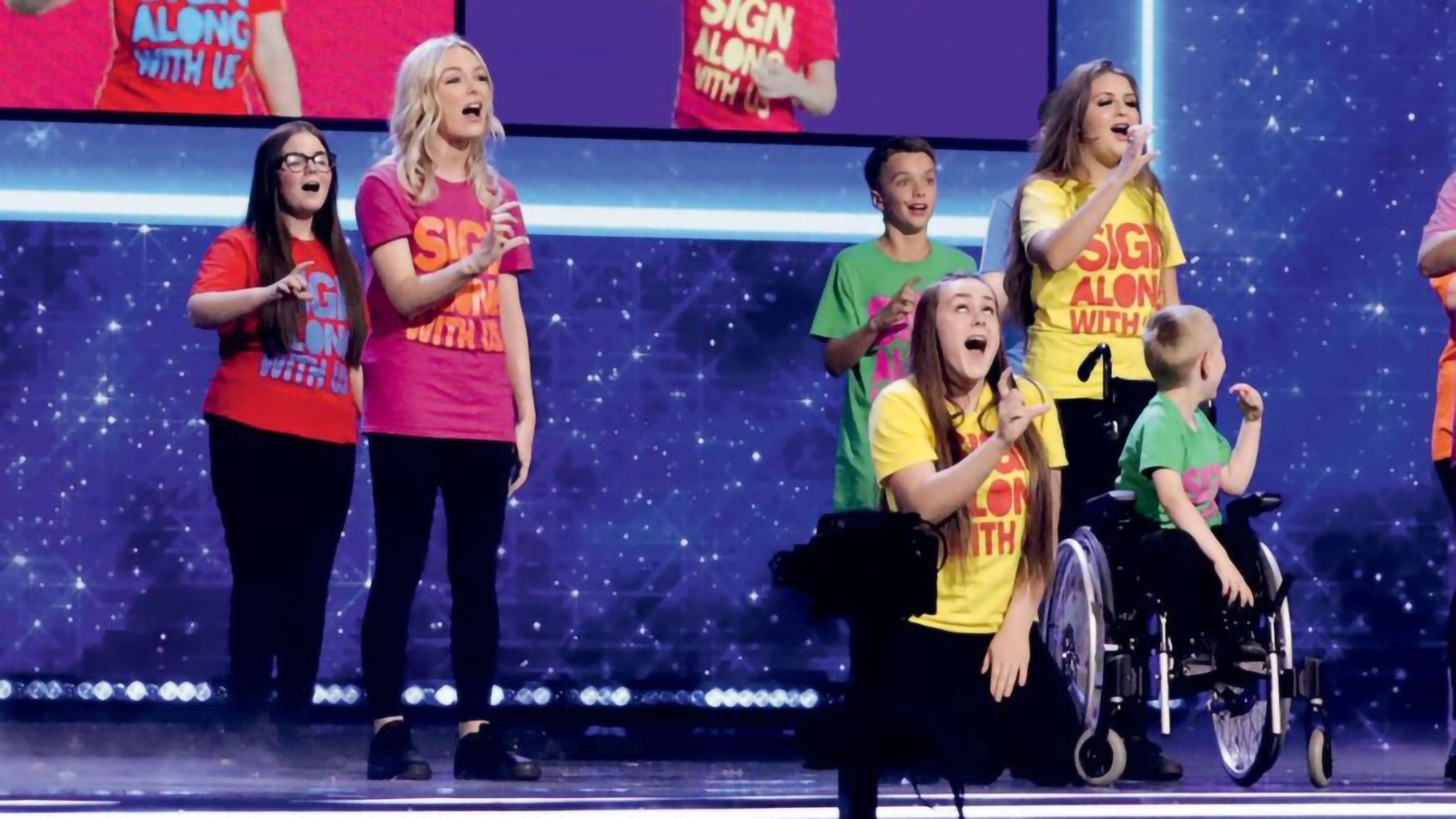
Kids were always in for a bumper year in terms of video when 2020 dawned, with three of the industry’s biggest players – Disney, NBC and HBO – all planning launches for younger viewers.
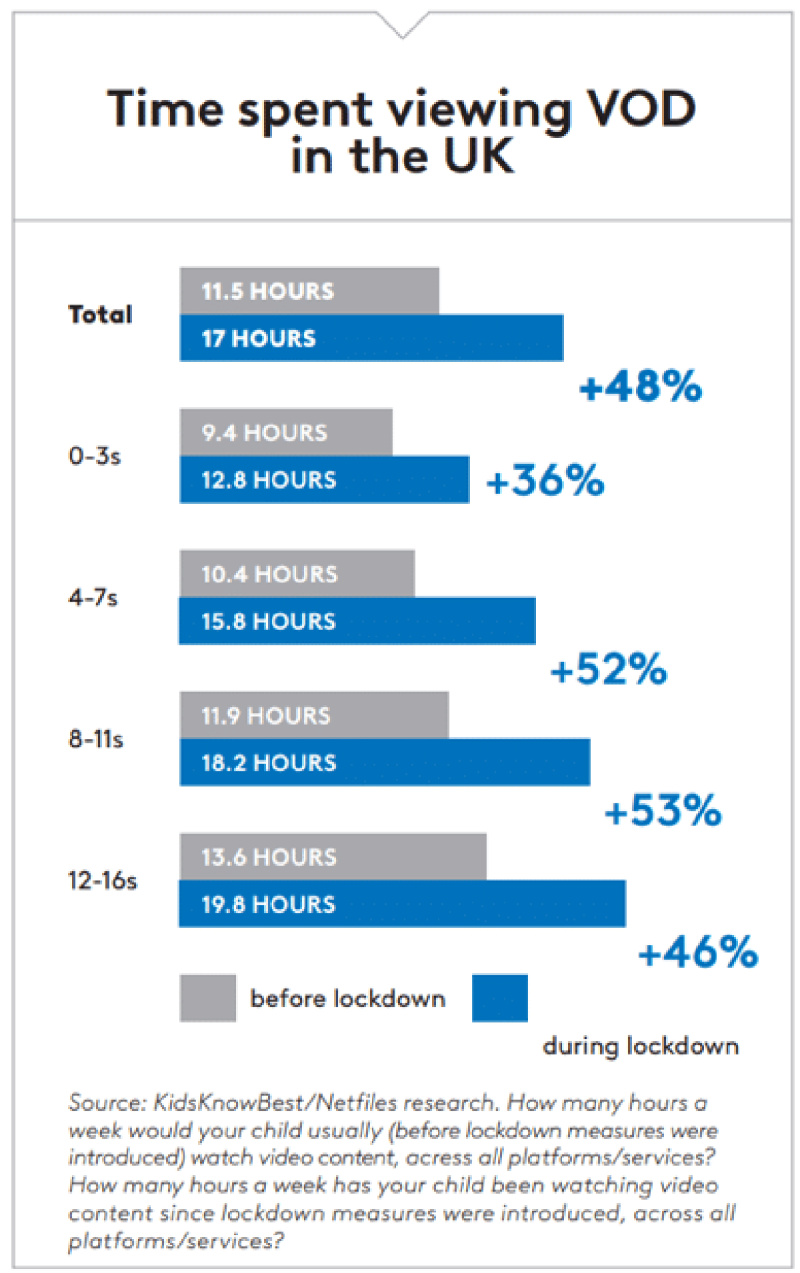
Then pandemic-driven lockdowns meant home entertainment became the ONLY form of entertainment and screens started to play a whole new role in family life. Frazzled parents, suddenly expected to juggle full-time work with home-schooling and their usual responsibilities, relied on television more than ever.
All over the world, kids began watching more content – in the UK, for example, an average rise of 48% was recorded in May 2020.
What are kids watching?
When we look at content, we’ve split it into categories reflecting the different audiences that exist here demographically and in their choice of media. It can be broken roughly into three groups:
1. Content made for kids, e.g. Peppa Pig, SpongeBob SquarePants and Teen Titans Go
2. Content made for general audiences, e.g. Stranger Things, Friends, The Simpsons
3. Content made for families, e.g. X-Factor, GBB and many blockbuster movies such as Avengers: Infinity War
Many kids watch content that skews older than their own age. This can be seen among younger audiences but is particularly noticeable in the 11+ demographic, which is when kids move to a content slate that looks very similar to their parents.
What is especially promising is the popularity of content made and curated by kids’ media professionals. eOne’s PJ Masks, Peppa Pig and Ben and Holly, battle with Paw Patrol for top spot amongst preschoolers. And interestingly, digital-first IPs such as Little Baby Bum make the top 10 with two of their shows – possibly as digital native millennials become parents.
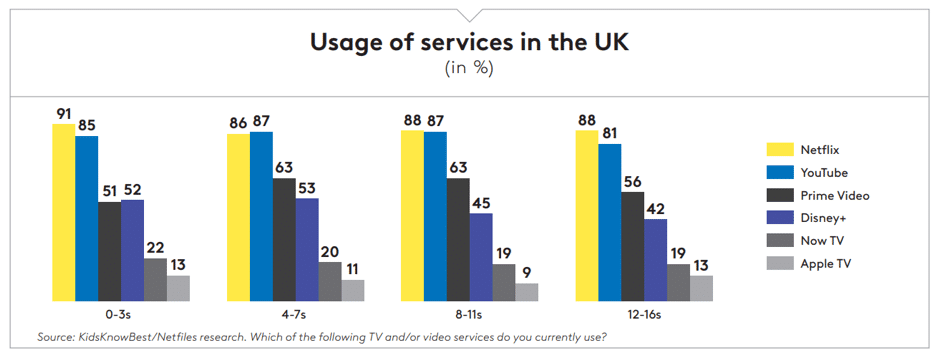
There’s also evidence that traditional launches can be interrupted by new players from platforms such as YouTube and the App Store – in the US, for example, Angry Birds tops the show and movie list. On the other hand, for under-11s you can never dismiss what are now classic kid shows like SpongeBob Squarepants, Alvinnn! and Horrible Histories, which compete successfully with newer offerings like Boss Baby and Teen Titans Go.
Where are they watching it?
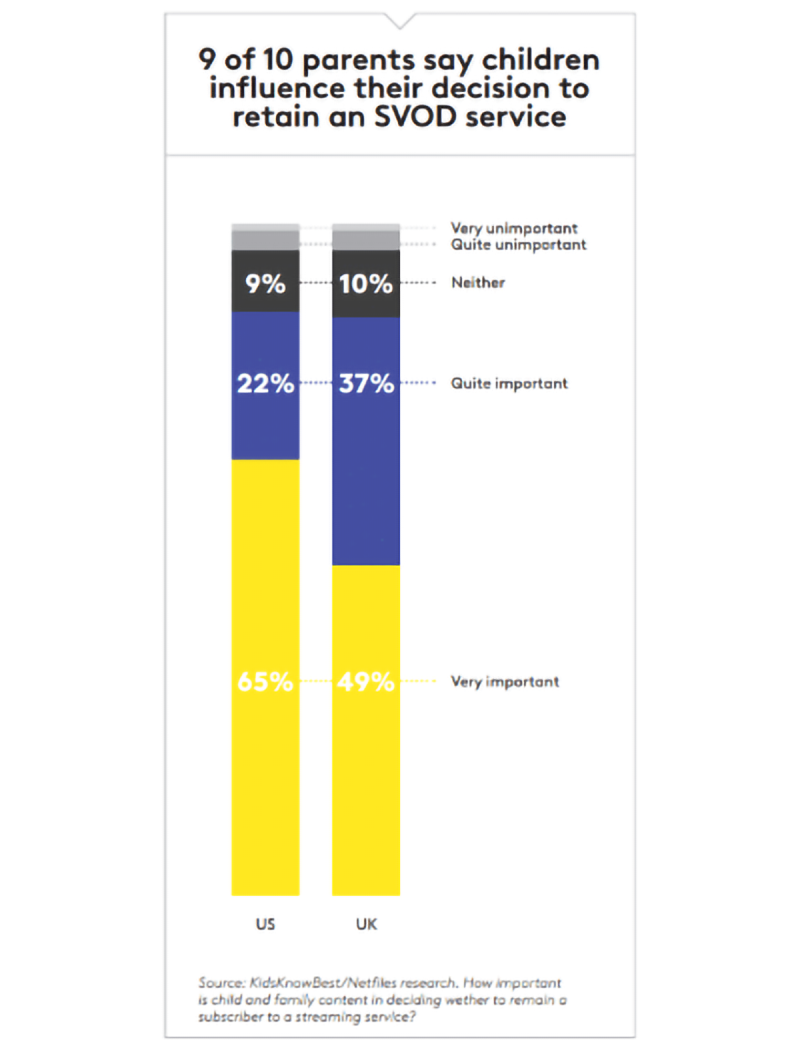
Netflix, practically a grandparent in the SVOD world, continues to dominate the kids’ media space with 88% of SVoD family homes in the UK subscribing at the time of writing. The nearest competitor is Amazon Prime where 48% of households have a subscription.
Both these services have plenty of content to offer audiences of all ages. Disney+ is more heavily oriented towards young viewers. It made a big splash with 7% of all families stating it was their favourite SVoD service, compared with 50% for Netflix and 7% for Amazon Prime. When you look at those with a subscription to Disney+ the percentage saying it’s their favourite more than doubles to 15%, showing that it meets the expectations of early adopting families.
There is a lot of traditional broadcasters with VOD offerings in the UK, although they’re not as strong as their paid counterparts. BBC iPlayer is ranked the best at #8 for the favourite service amongst UK SVOD kids.
A trend to outlast the pandemic?
Nine in 10 parents say their kids influence the choice of subscriptions to SVoD services and from kids we spoke to, the stand out platform they wanted to talk about was Disney+. Although Disney+ benefitted from being made available free, looking at how its grown in the US, where it’s been longer in the market, gives an indication it’s likely to continue growing.
None of these services were planned with a global pandemic in mind, and yet they are betting big that content for families and younger generations will be a lasting trend. For every family that grows out of kids SVOD, another one will come along, giving these services a good chance of surviving the churn that other SVOD platforms are starting to worry about.
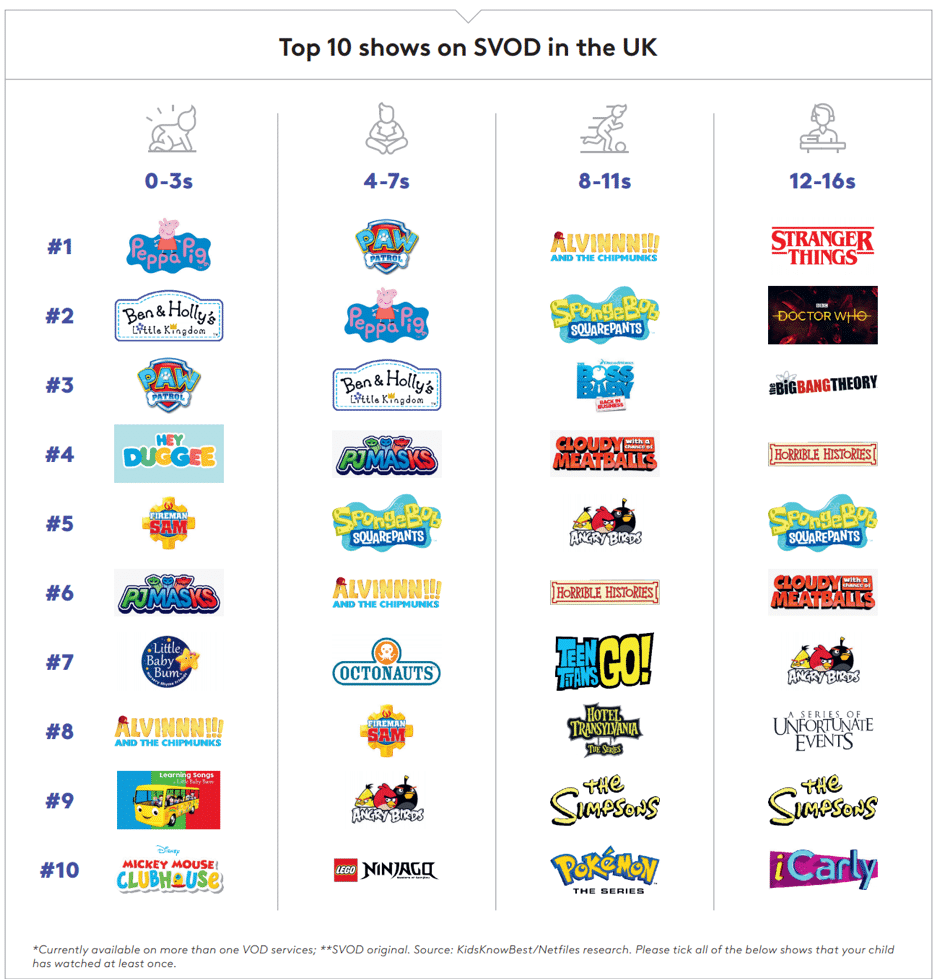
Pete Robinson, Chief Strategy Officer at KidsKnowBest